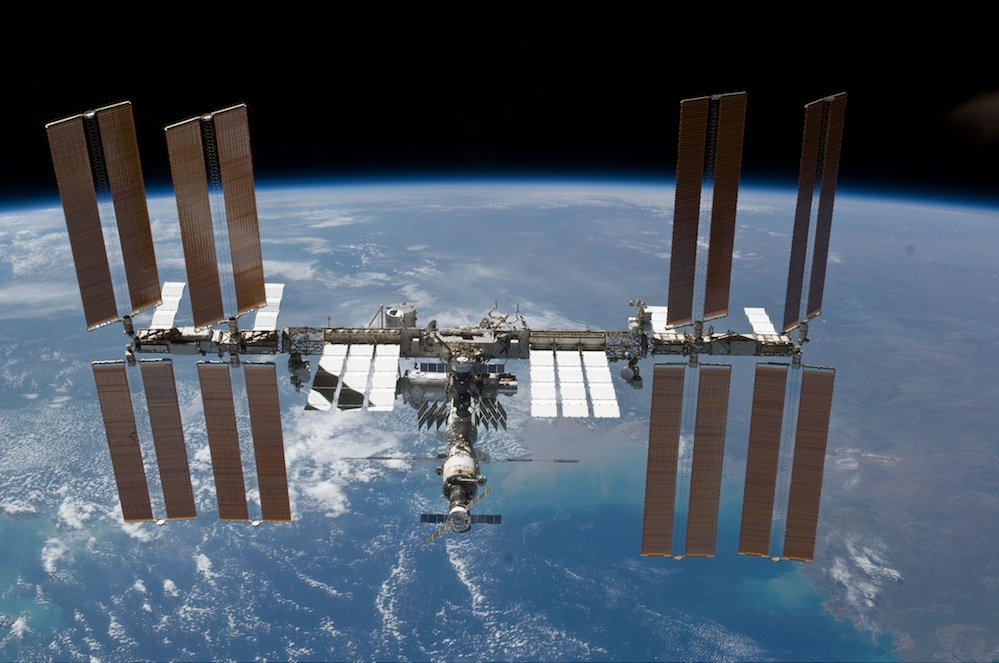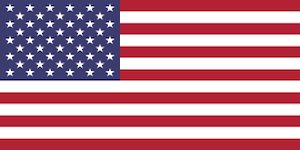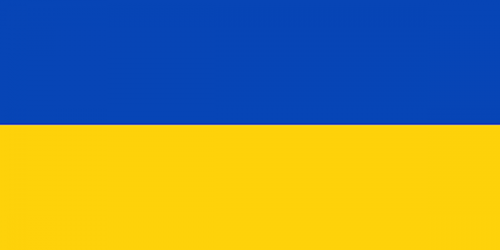The National Center for Earth and Space Science Education (NCESSE), and its international arm, the Arthur C. Clarke Institute for Space Education, are honored to announce the start of program operations for Student Spaceflight Experiments Program (SSEP) Mission 16 to the International Space Station (ISS) – the 18th SSEP flight opportunity since program inception in 2010. Mission 16 to ISS officially began on September 1, 2021, and we are proud to welcome aboard the 23 communities listed below.
Each participating community submitted a formal Implementation Plan for review and approval, which demonstrated how SSEP would address their community’s strategic needs in STEM education, and detailed a real world plan for how a Local Team of educators would engage typically hundreds of students in real microgravity experiment design and proposal writing. Based on the Implementation Plans, the 23 Mission 16 communities combined will engage 12,800 grade 5-16 students in experiment design, and expect over 2,100 flight experiment proposals to be received from student teams. A 2-step formal proposal review process, culminating with the SSEP National Step 2 Review Board meeting in November 2021 in the Washington D.C. metropolitan area, will select one flight experiment for each of 23 communities. Two communities, Ukraine and Hillsborough County, Florida, are each flying 1 additional experiment, for a total of 25 Mission 16 flight experiments
Of special note–
- 11 of the 23 Mission 16 communities are returning: Mission 16 is the ninth mission for Hillsborough County, Florida; the eighth mission for Burleson, Texas; the sixth mission for the University System of Maryland; and the fifth mission for: Moreno Valley, California, Buffalo/Niagara, New York, and iForward-Grantsburg, Wisconsin. Mission 16 is also the third mission for 2 communities and the second flight for 3 other communities.
- one of the Mission 16 communities is an undergraduate effort: the University System of Maryland.
- one Mission 16 community is in Canada: Coquitlam, British Columbia.
- one Mission 16 community is a nationally distributed SSEP competition across Ukraine.
The 25 flight experiments for Mission 16 to ISS will be selected by December 16, 2021, with a projected launch as the SSEP TBD payload of experiments in late Spring / early Summer 2022.
Community participation in Mission 16 to ISS has been made possible through NCESSE strategic partnerships with Nanoracks LLC, and the Center for the Advancement of Science in Space (CASIS), as well as our National Partners, the Smithsonian National Air and Space Museum, Subaru of America, Inc., and Magellan Aerospace. Funding for many of the participating communities was also provided by Local Partners – businesses, foundations, and individuals – which provided funding directly to participating schools in their area. The SSEP Mission 16 Community Profiles and Local Partners page is a place on the SSEP website where we provide a profile of each participating community, and we acknowledge the remarkable support provided by all National and Local Partners. We invite you to explore that page to read about your community, and assess if there are any partners that need to be added. To add partners, please contact SSEP Flight Operations Manager John Hamel, email: johnhamel@ncesse.org.
Program Overview and Heritage to Date
The Student Spaceflight Experiments Program (SSEP) is designed as a national model for STEM education, and immerses hundreds of students across a participating community in an authentic real world, trans-disciplinary research experience as part of America’s Space Program. This is not a simulation – we are truly inviting each community into America’s Space Program. We are inviting all participating students to take on the role of real microgravity researchers – formally designing microgravity experiments against real world engineering and technology constraints, writing real proposals against a proposal guide, and going through a real proposal review competition. SSEP was created in the very best spirit of allowing our students to see firsthand what is expected of professional scientists and engineers on the frontiers of human exploration.
Each participating SSEP community is provided a flight certified, microgravity research mini-laboratory and launch services to transport the mini-lab containing one student team designed microgravity experiment to the International Space Station in Low Earth Orbit, where an astronaut will operate the experiment. Each community has a Local Team of educators that first delivers an established microgravity curriculum to hundreds of students, and the students then form formal research teams of 3-5 students per team. Each of the resulting 50-100 teams vie for the single experiment slot provided to their community through formal experiment design and proposal writing, mirroring how professional researchers secure limited research assets through a formal call for proposals. Review of all proposals culminates with the SSEP National Step 2 Review Board selecting the flight experiment for each participating community.
Heritage: Since program inception in 2010, 128,300 grade 5-16 students in 191 communities across the U.S., Canada, and Brazil have been immersed in real research, designing microgravity experiments to fly to ISS. Over 26,000 formal research proposals have been submitted by student teams. To date, 319 experiments have flown to ISS and returned to Earth for harvesting and analysis by their student flight teams. Over 173,000 more students across the entire grade preK-16 pipeline were engaged in their communities’ broader STEAM experience, submitting 144,780 Mission Patch designs. Each year, communities send delegations to the SSEP National Conference at the Smithsonian National Air and Space Museum, in Washington, DC, where student flight teams report on experiment design and science results.
To get into the spirit of SSEP Mission 16 to ISS, the video below is the NASA live coverage of the launch of SpaceX CRS-23 from Kennedy Space Center in Florida at 3:14 am EDT August 29, 2021. The SpaceX CRS-23 Dragon spacecraft carried the 6 SSEP Mission 14 and Mission 15 experiments to ISS. The Mission 14 and Mission 15 experiments will be conducted by the astronauts for a month on orbit, with Dragon returning to Earth, and splashing down in the Atlantic off the Florida coast, on September 30, 2021, less than 1 month from now.
You can watch videos of all SSEP launches since program inception, with the first two SSEP payloads on the final flights of Space Shuttles Endeavour (STS-134) and Atlantis (STS-135), and watch videos of astronauts operating the experiments, at the Launch and On-Orbit Operations History page.
SSEP Mission 14 and SSEP Mission 15 to ISS
Vehicle: SpaceX CRS-23
Launch: August 29, 2021, 3:14 am EDT
Site: Space Launch Complex 39, Cape Canaveral Air Force Station, FL
Payload Designation: SSEP16 – Apollo, 3 of 33 experiments and SSEP17 – Skylab, 3 of 5 experiments
SSEP Mission 14 Information: Flight Profile, Media Coverage, Press Kit
Mission 14 Participation: Participating Communities, Flight Mission Patches, Conference Presentations
SSEP Mission 15 Information: Flight Profile, Media Coverage, Press Kit
Mission 15 Participation: Participating Communities, Flight Mission Patches, Conference Presentations
Mission 16 Communities – Welcome Aboard!
1. Ukraine – Nationally Distributed Program
Junior Academy of Sciences of Ukraine
European Junior Academy of Sciences
2. Coquitlam, British Columbia, Canada
(SSEP RETURNING COMMUNITY)
School District #43 (Coquitlam)
3. Moreno Valley, CA
(SSEP RETURNING COMMUNITY)
Moreno Valley Unified School District
4. Perris, CA
Val Verde Unified School District
5. Redlands, CA
(SSEP RETURNING COMMUNITY)
Redlands Unified School District
6. Hillsborough County, FL
(SSEP RETURNING COMMUNITY)
Hillsborough County Public Schools
7. Ocala, FL
Marion County School District
8. Lake Charles, LA
Lake Charles Boston Academy
9. University of Maryland, College Park
(SSEP RETURNING COMMUNITY)
University System of Maryland
10. Grand Blanc, MI
Grand Blanc Community Schools
11. Harper Woods, MI
(SSEP RETURNING COMMUNITY)
Chandler Park Academy School District
12. Hoboken, NJ
Hoboken Public School System
13. Albany, NY
City School District of Albany
14. Buffalo/Niagara, NY
(SSEP RETURNING COMMUNITY)
15. Garden City, NY
Garden City School District
16. Norwood, NY
Norwood-Norfolk Central
17. Pickerington, OH
Pickerington Local Schools
18. Bandera, TX
(SSEP RETURNING COMMUNITY)
Bandera Independent School District
19. Burleson, TX
(SSEP RETURNING COMMUNITY)
Burleson Independent School District
20. Ector County, TX
(SSEP RETURNING COMMUNITY)
Ector County Independent School District
21. Texarkana, TX
Texarkana Independent School District
22. Bellingham, WA
Lummi Nation School
23. iForward-Grantsburg, WI
(SSEP RETURNING COMMUNITY)
Grantsburg School District





Comments are closed.